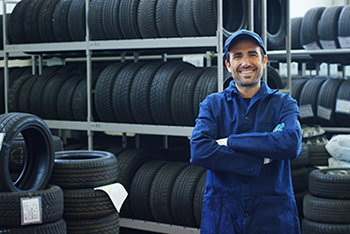- Track your orders
- Save your details for express checkout
Articles - old
5 Top Tips For Planning A Tyre Bay
 Should I lease or buy the gear?
Should I lease or buy the gear?
This depends on the initial capital you have available to invest but leasing is becoming very popular now. It has several features. It helps to conserve cash, giving you a fixed monthly cost to budget with, and it makes it easy to upgrade or replace equipment — which is improving all the time — without another big outlay. Typically, tyre equipment depreciates fast giving it low residual value at the end of its life, which makes leasing more attractive. Another key benefit of leasing is it helps you keep your gear up to date, your workshop looking modern, and it keeps staff safe by giving you the option to replace it for a new machine at the end of the term.
How quickly will I pay off the equipment?
Obviously, this depends on the volume of tyres you are changing, but here’s a scenario: A workshop that invests in mid-range equipment costing $ 9800 plus GST and changing around 12 standard passenger tyres per day would expect to have the equipment paid off in 10 weeks, based on a net profit percentage of 10 per cent. Treadway Equipped can help you prepare a break-even and profitability chart based on your volumes and investment.
What gear is best suited for my workshop?
Look at the area you are servicing and assess the range of tyres you will be dealing with. Is it mostly passenger, or 4WD? Are you doing any truck or agricultural tyres? Once you are clear on this, we can help specify the most suitable equipment. For example, if you are doing heavier 4WD and light truck tyres, we would recommend the Steiner ST480 Truck & Passenger Balancer that comes with a built-in wheel lifter. You also need to look at the volumes you plan to change. I you are setting up a dedicated tyre shop and expecting to have the equipment working consistently throughout the day you will be better suited with a premium machine like a Fasep, Corghi or Hunter. However, if you are a workshop that is adding a tyre bay and expect to do a few sets a day, you would be better suited with a mid-range machine like a Steiner ST260 Tyre Changer. It's all about making sure you get the best ROI on your investment and having gear that’s fit for purpose.
How much will I have to spend to set up?
There are a few key assets needed for a tyre bay; a tyre changer, wheel balancer, trolley jacks, impact wrenches and a compressor but you may already have a compressor. An entry level setup could be as low as $5873 plus GST. A premium set up could cost around $ 23,500 + GST. The most important thing is to have equipment that is fit for purpose.
How much space will I need?
Ideally for a single car bay setup you would need around 56m2. For the equipment we would recommend 2.8m deep by 3m long. Remember, a tilt-back tyre changer has to sit out from the wall 800mm. If you do have a corner that you can position the tyre changer in it is definitely a space saving as the tilt head can tilt back into the corner. For the working area around the vehicle, ideally you want to allow 6m wide by 8m long. This will allow you to have at least 2m either side of the vehicle for positioning jacks and removing and fitting wheels.
Our approach
We help tyre shops and vehicle service centres grow their revenue with advice and equipment right-sized for their customers’ business needs.
View all wheel balancers.
View all tyre changer range.
